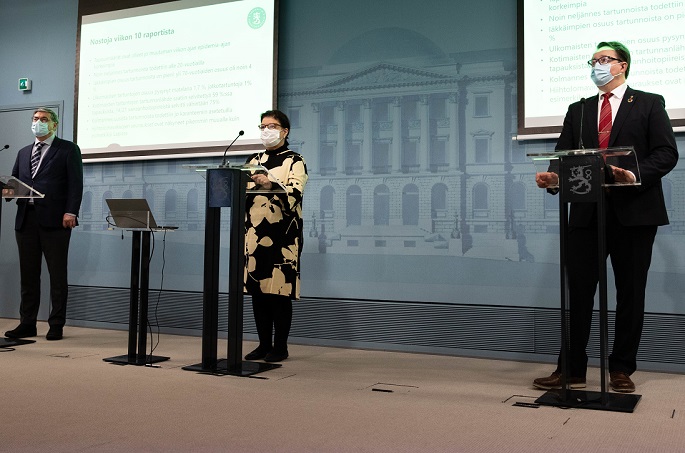Coronavirus situation remains difficult in HUS, Southwest Finland
Published : 18 Mar 2021, 20:58
Updated : 18 Mar 2021, 22:56
The COVID-19 situation remains difficult in the Hospital District of Helsinki and Uusimaa (HUS) and the Hospital District of Southwest Finland, said the Ministry of Social Affairs and Health, and the Finnish Institute for Health and Welfare in a press release on Thursday.
Over the past few weeks, the need for specialised healthcare and particularly the need for intensive care have increased considerably in these districts.
Between 8 and 14 March, about 4,800 new cases were recorded in Finland, showing an increase of more than 300 cases week on week.
This is the highest weekly number of new cases reported in Finland since the start of the epidemic.
Because the situation has worsened considerably throughout Finland, it is justified that regions maintain and proactively increase comprehensive and effective ways to prevent infections and to ensure the capacity of the healthcare system.
The incidence of new cases was 86 per 100,000 inhabitants between 8 and 14 March, while in the previous week it was 80.
The total number of new cases in the last two-week period (1–14 March) was nearly 9,200, which was almost 1,700 cases more than that in the preceding two-week period. The incidence of new cases was 166 per 100,000 inhabitants, while in the preceding two-week period it was 136.
Currently, the estimated basic reproduction number is 1.0–1.2, with a 90 per cent probability, while in the previous week it was 1.1–1.3. Although the epidemic has further accelerated at the national level, it is likely that the recommendations and restrictions in place have slowed down the spread of the epidemic to some extent. The situation has improved particularly in Åland and the Satakunta Hospital District.
By Wednesday, 17 March 2021, more than 75 per cent of people over 80 years of age had received at least one vaccine dose, and over one third of those aged 75–79 had been vaccinated at least once.
Most of the new cases are still reported among working-age adults, particularly among young adults. Between 8 and 14 March, people under 50 years of age accounted for about 81 per cent of all cases and people under 30 years of age accounted for nearly 50 per cent of the cases.
People under 10 years of age accounted for about 11 per cent of the new cases, while people aged 10–19 accounted for around 14 per cent of the new cases.


